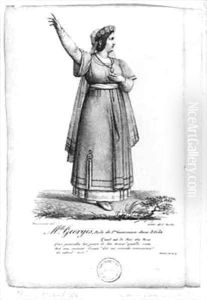Fauconnier Paintings
Henri Victor Gabriel Le Fauconnier was a pivotal figure in the early 20th century avant-garde movement, particularly known for his significant contributions to Cubism. Born on July 5, 1881, in Hesdin, France, Le Fauconnier moved to Paris to pursue his artistic career, where he initially studied under Jean-Paul Laurens at the Académie Julian. His early work was influenced by the Symbolist movement, but he soon shifted towards a more innovative approach, drawing inspiration from Paul Cézanne and the burgeoning Cubist movement led by Pablo Picasso and Georges Braque.
Le Fauconnier's work is characterized by its bold geometric shapes, vibrant colors, and the dynamic interplay of form and space, which became hallmarks of Cubism. He was among the core group of artists who exhibited at the Salon des Indépendants and the Salon d'Automne, pivotal venues for the dissemination of avant-garde art in Paris. His painting 'The Huntsman' (1911) is often cited as a key work in the development of Cubism, showcasing his ability to deconstruct natural forms into abstract, faceted shapes.
Throughout his career, Le Fauconnier was actively involved with the Section d'Or group, a collective of artists who sought to push the boundaries of Cubism further. Despite his crucial role in the early stages of Cubism, Le Fauconnier's work gradually moved away from the strict confines of the movement. In the later years of his career, he focused more on teaching, influencing a new generation of artists through his innovative ideas on form and color.
Henri Le Fauconnier passed away on December 25, 1943, in Paris. While he may not be as widely recognized as some of his contemporaries, his contributions to the development of Cubism and modern art remain significant. Today, his works are held in several major museums and collections around the world, testament to his lasting impact on the course of art history.
